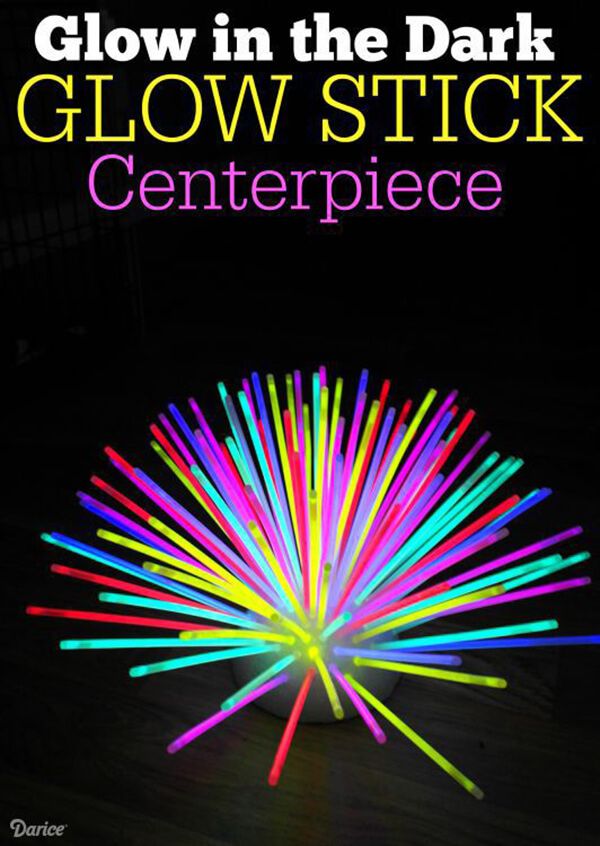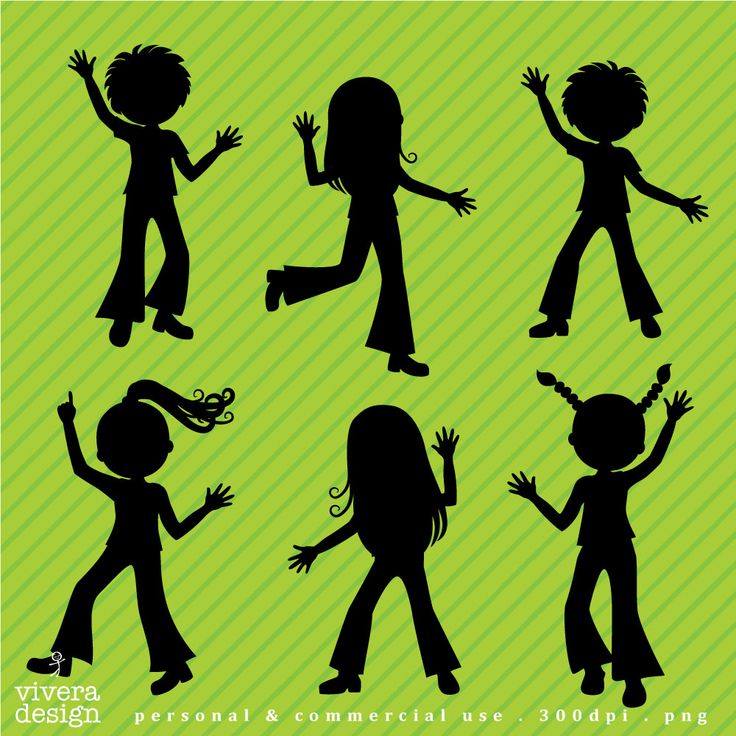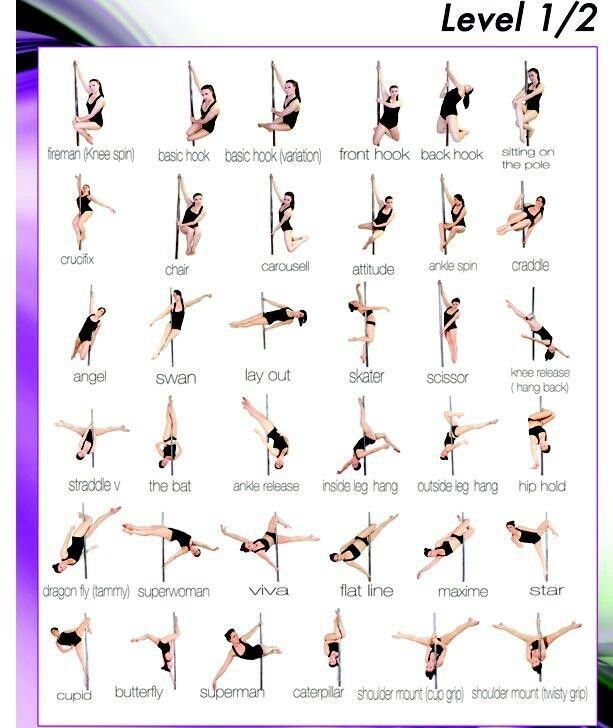Teaching my boyfriend how to dance
How to Save Your Marriage: Dance Lessons and Patience
I’m gliding across an empty dance floor in the arms of a tall, strong, graceful man named Shane. Shane wears too much jewelry, reeks of men’s cologne, and is about half my age. But in his arms, I can do it all: not just a simple waltz, but also the West Coast and the East Coast swing, the jitterbug, the rumba, the cha-cha-cha. I am beginning to have feelings for him, my ardor building with each dip and turn, until I catch a glimpse of my husband standing against the wall with a look of utter bewilderment on his otherwise intelligent face. “I’m supposed to be able to do that?” he says.
Almost 30 years ago, I fell in love with my husband because I could be myself with him. He was literally tall, dark, and handsome—versus now, when he is tall, white-haired, and handsome. He liked dogs, tolerated my father, and adored me.
Unfortunately, he couldn’t dance. It’s not that he had two left feet, either—he ran like a deer, swam with speed and agility. It was more an inner-ear thing. He had no rhythm. Correction: he had negative rhythm. He wouldn’t know a down-beat if it beat him on the head.
Whereas I love to dance, courtesy of my mother, who used to dance me around the house to the soundtracks of various Broadway shows. For me, dancing is pure joy—utterly freeing. All I have to do is listen to the music, and the steps are just there, under my feet. I love to dance so much that, before I met and married my husband, I seriously considered running off with a man named David, who was sleazy, furry, hyper, and insistent, for the sole reason that the man could shake his groove-thing like nobody’s business.
For better or for worse, I chose my husband over David, and we closed the deal one gorgeous June night in the company of friends and family, celebrating afterwards in the usual way, with music, wine and food. It was a fairy tale, with me in the starring role, arrayed in a gown, and with flowers in my long hair. The magic moment arrived with the first dance approached: my brand-new husband, tall and elegant in a tux, took my hand, led me to the dance floor, stepped on my feet, kicked me in the shins, and pulled me this way and that, in accordance to some inner music that he and he alone heard: perhaps it was something by Pink Floyd.
The magic moment arrived with the first dance approached: my brand-new husband, tall and elegant in a tux, took my hand, led me to the dance floor, stepped on my feet, kicked me in the shins, and pulled me this way and that, in accordance to some inner music that he and he alone heard: perhaps it was something by Pink Floyd.
More than 25 years later, though, we have come to this point—a crossroads. We’ve made it through all kinds of ups and downs, including cancer, two major moves, my mother’s death, a career crisis or two, and a couple of hurricanes. The eldest of our three children graduated from college and made Aliyah and served as a soldier in the Israeli army. The other two, right behind him, have little need for me beyond my college-tuition paying abilities. Even my dog isn’t as interested in my ministrations as she once was. Which leaves what, exactly? A house, a garden, work—and a husband who wouldn’t know a good boogie-woogie if it abducted him and took him to Mars.
It goes right to the heart of our marriage, too: on the one side there would be the wife, me, dancing around the kitchen, and generally being slightly less than constrained; on the other side, there would be the husband, his life conducted entirely within the space behind his forehead. Our fights, over the decades, went something like this:
Our fights, over the decades, went something like this:
Husband: the problem with you, Jen, is that you follow your instincts with no regard for actually thinking. You’re too emotional, too out there. You need to rein it in on occasion.
Me: the problem with you is that you can’t even locate your feet, you brainiac over-intellectual psycho-nerd.
Hence Shane. Initially, when my husband and I first started dabbling in dance lessons, it was because, for our anniversary, I thought it would be fun to give my husband two private dance lessons—with me along, of course. But after the first lesson—at $70 a pop—Shane told us point-blank that with only two lessons he wouldn’t be able to do much other than teach my husband how to count out a one-two beat. So we came back a few more times, and a few more times after that, and so forth and so on, hoping against hope that, within the confines of the dingy, over-air-conditioned studio in a half-vacant mini-mall off a side street behind a Walmart near a main truck route, we might transform ourselves into rough equivalents of people who actually know how to dance.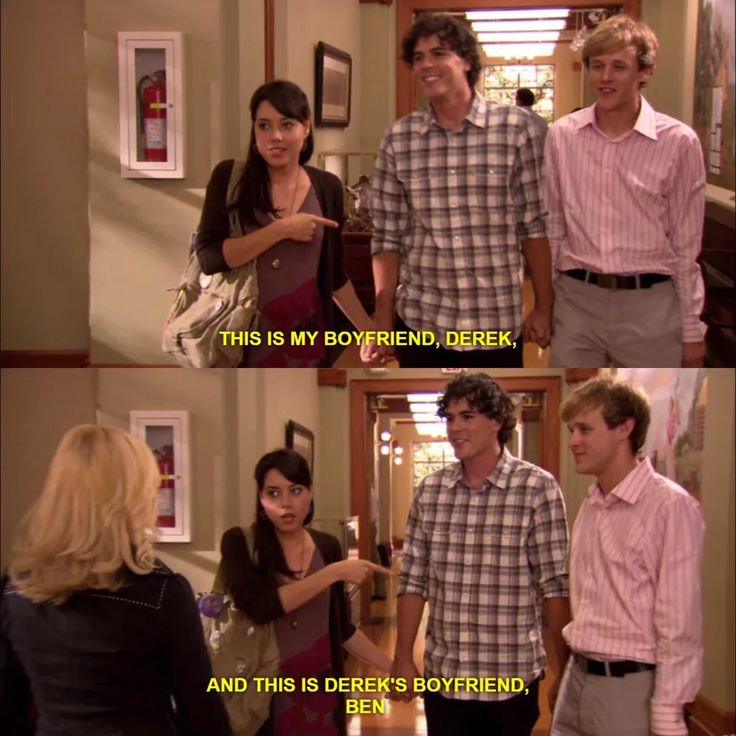
And you’re just going to have to believe me when I say that I really do love my husband a whole lot more than I ever loved our dance instructor. A lot more. Because in fact I didn’t really love Shane at all. But when the man took me in his arms to glide me around the dance floor, my body just melted away, becoming both more and less than it was, and I was in utter and complete bliss. I was one with the music, one with the dance itself, as Shane led with strong manly resolve. Versus my husband, because when my husband leads, he’s reluctant to apply much in the way of pressure to my back or my shoulder or any other body part where we connect, and hence, I am just supposed to know when he’s wants to, for example, execute an underarm turn.
“What are you doing?” I’d say.
“Excuse me. But aren’t you supposed to be following me?”
“Yeah. And I would, too, if you actually led.”
“I’m doing better. Aren’t I doing better?”
“Why ask Shane? Shane’s not the one dancing with you. I am, and I don’t have a clue where you want me to go. It’s like dancing with a flaccid noodle.”
I am, and I don’t have a clue where you want me to go. It’s like dancing with a flaccid noodle.”
“This was your idea, not mine.”
“Oh, come on guys. This isn’t marriage counseling here.”
“Shut up, Shane.”
He started us on the Foxtrot, because the Foxtrot is easy, like walking to music. The next easiest is the box step—the foundation of both the Polka and the Waltz—because here again, the steps are dead-easy—front, side, together. As summer rolled into fall and then winter, and winter unfolded into spring and then blossomed into summer, we went on to learn various flourishes, and finally continued on to scale the heights of swing, which my husband actually enjoyed, a little, because he got to spin me around, or at least he did when he remembered to exert enough physical conviction to indicate which direction I was supposed to turn.
How much money did we spend, anyhow, before my husband finally got the hang of the box step? Truthfully, I didn’t keep track, and I don’t really want to know, but estimating from memory, I’d say in the range of somewhere between one and two thousand dollars, or enough to fly to Paris for a romantic weekend. And the man still couldn’t dance. On the other hand, he continued to be uncomfortable when I took to the dance floor either alone or with some other partner. Sometimes, afterwards, he’d make remarks: “You’re too old to be doing that, Jen.” Or: “Next time, would you please restrain yourself?”
And the man still couldn’t dance. On the other hand, he continued to be uncomfortable when I took to the dance floor either alone or with some other partner. Sometimes, afterwards, he’d make remarks: “You’re too old to be doing that, Jen.” Or: “Next time, would you please restrain yourself?”
By the time our next anniversary rolled around, our threesome with Shane was at its apex. Which is to say that we were still shelling out for private dance lessons, but by now were coming out of denial about our prospects of, say, making it onto one of those dancing shows on TV. I gave my husband a CD, he gave me a book, and we went out to dinner, where we discussed the profound mystery of why anyone chooses to be married.
And then, one day, just like that, we looked at each other and realized that Shane was no longer someone we particularly needed, or wanted, in our lives. By now we’d been neglecting to go to the studio for weeks, coming up with one excuse after another for our negligence. But the truth was, and we both knew it, no amount of private dance classes could teach us to glide gracefully, and in unison; no amount of coaching might heal the rift that our own inborn personalities had brought into our marriage.
But the truth was, and we both knew it, no amount of private dance classes could teach us to glide gracefully, and in unison; no amount of coaching might heal the rift that our own inborn personalities had brought into our marriage.
Nonetheless, like elephants we’re in it for life, and every now and then, as I’m washing the dishes after dinner, my husband will put his arms around me, turn off the water, spin me towards him, and lead me, slowly across the kitchen floor, where we will sway in each other’s arms to music that the two of us alone can hear.
Jennifer Moses is a writer and painter.
Contact us at [email protected].
What partner dancing taught me about connection, movement and gender
This is the story of how I learnt to dance, how it broke me out of my English shell, and includes a list of learnable dance principles.
I hit a ‘peak dance’ experience at a Blues festival in Madrid 2013. We had danced ’til daylight. I couldn’t stop. The connection is like a drug. The authenticity of Blues music moves us deeply. When you hold someone in that sound, expressing that sound physically together, something striking happens: oxytocin abounds. Through the night you get close to and let go of so many. Your connection muscle strengthens.
The connection is like a drug. The authenticity of Blues music moves us deeply. When you hold someone in that sound, expressing that sound physically together, something striking happens: oxytocin abounds. Through the night you get close to and let go of so many. Your connection muscle strengthens.
The next day I felt changed, I felt something so specific yet I had no words for. That morning I typed in my diary:
The other dancers’ movement felt as distinct as the timbre of a beautiful musical instrument. And as our two kinaesthetic voices attuned, they became a new unique voice united in music. The Blues spoke through us, and we floated on it, in a lightness and intensity I don’t think I’d felt before. How I related to the other dancer transformed sometime during those four hours of dancing, as though I had let go of something. It didn’t matter how ‘good’ my dance partner was. Any unexpected movement so easily and so instantly became part of what we co-created in the music. Whatever happened felt it was exactly as it should be. Hours later my body still feels lighter and most dialogue or interaction feels more seamless. It’s so interesting that changing how you do one thing can change how you do another.
Whatever happened felt it was exactly as it should be. Hours later my body still feels lighter and most dialogue or interaction feels more seamless. It’s so interesting that changing how you do one thing can change how you do another.
What does physical connection do to us?
Every point of view is narrow. We are naturally limited by what we individually see and experience. There are many barriers to block our view of the experience of others. What’s unique about partner dancing is that you learn to interconnect your physical experience with that of another’s. We even learn to listen and speak at the same time. This is listening in the sense of feeling what your partners body is ‘saying’ whilst your own body ‘speaks’. Your partner ‘follows’ the way you move your body. How they follow you feeds back into how you lead. It’s a physical kinaesthetic version of ‘me seeing you seeing me seeing you’. An infinite feedback loop that attunes you both deeply. I danced for about eight years before I had this experience. Learning to dance is very much like learning a language in that it is a medium for communication. At its best it is a two-way conversation. In true conversation we can connect our viewpoints.
Learning to dance is very much like learning a language in that it is a medium for communication. At its best it is a two-way conversation. In true conversation we can connect our viewpoints.
How it began
I am not a natural dancer. As a 17 year old I recall being embarrassed at my own jerky awkwardness in a discotheque mirror. My mother told me just to be sure of my moves and it would make me a good dancer. My surely odd moves made me cringe, feeling so clueless about what part of my body to move and how to move it. As a student, a friend suggested I attend the ballroom dance class. “A good way to meet girls” she advised. I was immediately sold, and even more so when I discovered dance classes usually have more women than men (women had to cue up to dance with me). We quickly learnt many of the ballroom dances: waltz, quickstep, Viennese waltz, rumba, cha cha cha, jive, and samba. My first breakthrough was leading a whole jive routine fluidly. It was simply the feeling of doing one move while envisaging the next, and enjoying the flow of movement through music.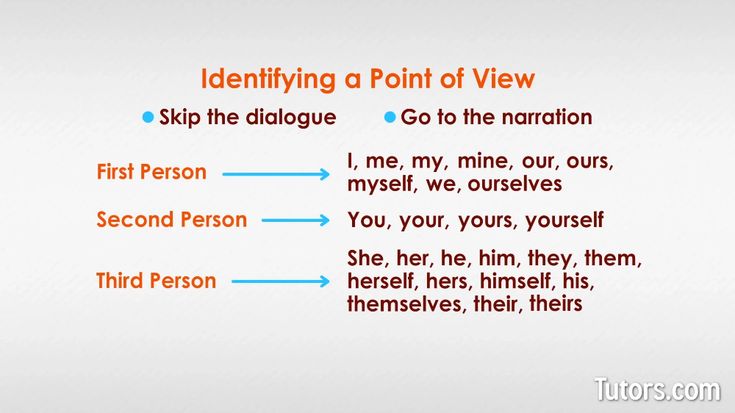 We weren’t in ‘conversation’ but we did connect through an agreed routine.
We weren’t in ‘conversation’ but we did connect through an agreed routine.
Before I knew it I had been recruited into the London University Ballroom and Latin American Dance society, to compete the following academic year. This wasn’t a judgement of my competence. Ballroom competitions are leagued like football. The beginner’s team will take almost anyone. For two years I had subsidised private ballroom classes and had a dedicated partner. I focussed on Jive, Cha cha, and Rumba. I loved all three. Jive for being so joyfully energetic and upbeat, Cha Cha for its Latin slickness, Rumba for its slow romantic intensity.
Here I list some of the key principles for the language of dance. Notice you could apply many of these principles to other physical disciplines and relational experiences, including your favourite physical relationships ?
To use a language learning metaphor, these principles are like the grammar of dance: broad principles that apply to most phrases. I will not mention too much about specific steps (dance vocabulary).
Key principles I learnt from Ballroom
Isolation
It’s possible to move one part of your body without moving another. Body popping dancers that move like robots are an extreme example of this. They move like they are not human at all. For Cha cha I learnt to rotate my hips whilst my shoulders remained static. This is tricky because your body is one piece. Moving one limb will naturally move the rest. Practising such movement is much easier with a mirror. You have to get a feel for how to move the muscles that isolate the part of your body you don’t want to move. Your reflection shows you when you are doing this right. When I see the movement I’m looking for in my body, I memorise the way it feels so that I can replicate it without a mirror. Just as every musical chord has a unique texture, every combination of muscle movement has a unique sensation: memorise that sensation and you can recalibrate how your body moves.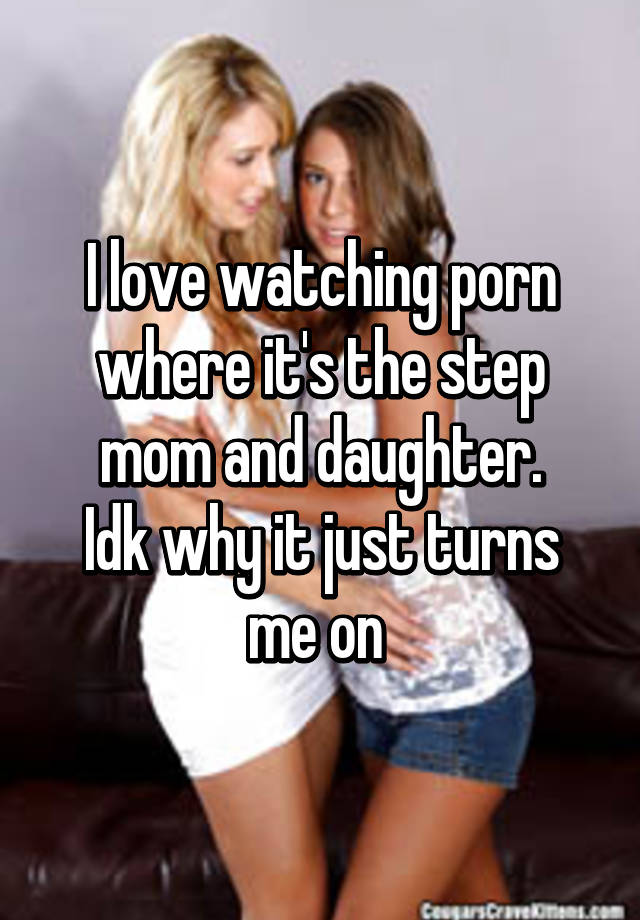
Shoe sole traction
We all need to be sure footed. The degree of traction between your feet and the floor is very important. You need it to be not too slippery and not too sticky. Michael Jackson’s famous Moon Walk depends on having exactly the right degree of slipperiness (also controlled with weight placement between feet). You can also adjust the degree of traction with substances like talcum powder (for more slip) or by brushing the suede soles of your shoes (for more stick). Covering your soles with Gaffa tape is a good quick fix because it tends to have the right degree of traction. For one 3 minute dance in a competition, water can to give you extra traction until it dries.
Flirt
Flirt with your judges and your partner. Look like you are loving the music (even if you hate it). Chemistry between partners will make the show more engaging to watch. Your ‘vibe’, the way you disturb the air is always a big factor in performance and will make up for a lot. My ballroom teacher Gillian Cook had us pretend we were about to kiss each other to make us better flirts. It made us feel like we had actually kissed even when we hadn’t.
My ballroom teacher Gillian Cook had us pretend we were about to kiss each other to make us better flirts. It made us feel like we had actually kissed even when we hadn’t.
Frame
For one body to communicate movement to another, some tension in the upper body and arms helps. We call this making a frame. If your arm is too floppy it won’t make a rod to transmit the motion like pedalling a bicycle transmits motion to the wheel. The person following the lead needs to maintain some tension in her arms so that the movement from the lead transfers to the follow’s body. Imagine the arm connection between dance partners is like the push-handle of a supermarket trolley, it moves immediately in the direction you sent it.
Look up
When you are taller than your partner it is easier to look down at her. Simply looking up — your jaw bone parallel with the floor makes big difference in presentation. It makes you seem prouder, more present, more confident.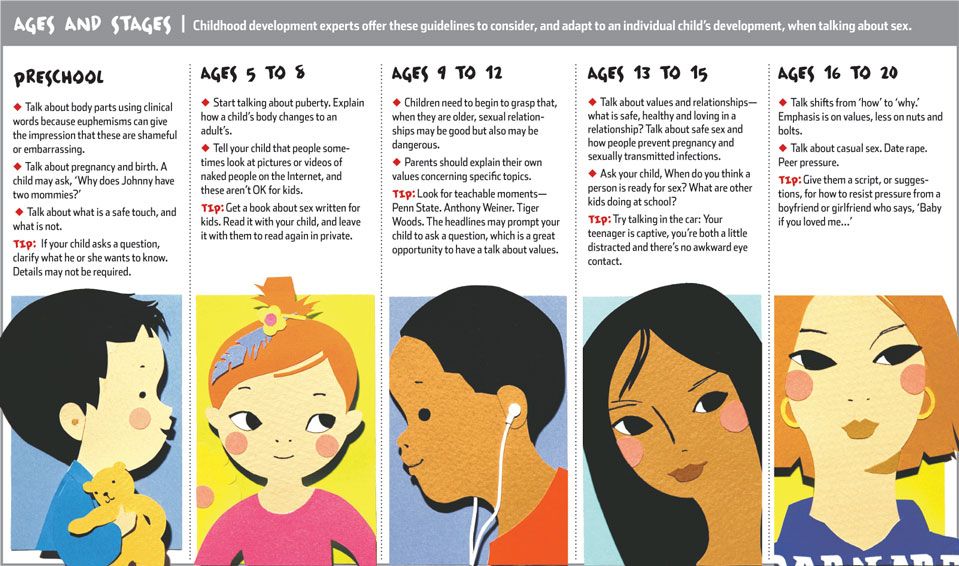
Presence
The pressure of judges instils focus. Every round was a knockout like the Wimbledon Tennis tournament. To be more present makes every movement more real, more engaging to watch, better placed, more in time with the music. You win a lot of extra points just from this. To feel more present under pressure is empowering.
Show off
Having the attitude of ‘look at me! I’m the most interesting thing to watch here’ went against my repressed British upbringing. The ballroom performance world taught me it is not narcissistic to consider yourself interesting , even fabulous, if your assumed fabulousness is about entertaining others. To be ‘full of yourself’ out of a need to feel good about yourself is very different to performing for the amusement of others. One is inward looking, the other outward.
Over those two years I competed in nine competitions. In Warwick I finally won a runners up trophy, coming 5th in the Novice level Latin event during the second year.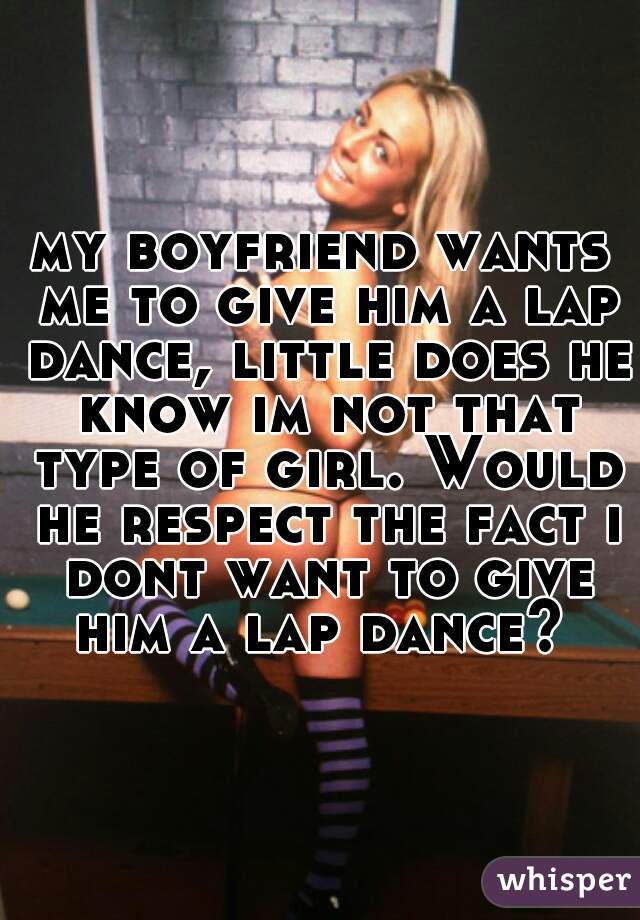 At the end of it all I was generally a more flirtatious, extroverted person with the confidence to tempt any woman onto the dance floor. The many ‘steps’ or dance moves I learnt gave me an understanding of how to move another’s body. Much like when I learnt some Judo, I gained knowledge of how one bodily position prepares you for another bodily position, only in dance it’s about having fun.
At the end of it all I was generally a more flirtatious, extroverted person with the confidence to tempt any woman onto the dance floor. The many ‘steps’ or dance moves I learnt gave me an understanding of how to move another’s body. Much like when I learnt some Judo, I gained knowledge of how one bodily position prepares you for another bodily position, only in dance it’s about having fun.
Finishing my two year Masters in Cognitive Behavioural Therapy I was no longer a student so I had to leave the university team. My ballroom days were over… I missed the over the top world of ballroom competitions that were like a ball on steroids with flamboyant costumes and compulsory fake tan. There is very little Ballroom social scene outside competitions. A year or two later I took up Lindy Hop.
Dancing Ballroom Jive with a strained foot at the Southern University Dance Championship (SUDC) 2005. Novice level. We go wrong in this clip and are knocked out from the next round.
Novice level. We go wrong in this clip and are knocked out from the next round.Key things I learnt from Lindy Hop
Lindy Hop is a dance related to Ballroom Jive. It has many steps in common but a different styling. Ballroom is generally very stiff and upright, Lindy is a more relaxed street dance in which you stick your bum out.
How to lead!
Ballroom taught me to lead but only via memorising routines. When I danced with people who didn’t know my routines I could adapt them to fit what they could follow. However, with Lindy Hop leading moved to a whole other level. The emphasis was social dancing with strangers, not repeating routines. We, therefore, learnt an extended vocabulary of moves to adapt. And there was somewhere to social dance Lindy every night of the week.
Momentum swing
Beyond transferring movement directly to your partner (like pushing a trolley) you can use the momentum in your ‘trolley’ to pull you.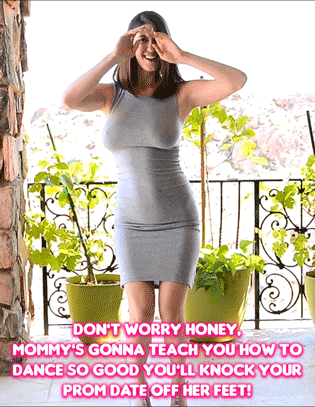 One of the defining moves of Lindy Hop is known as the ‘swing out.’ As the name suggests, you swing your partner out around you, one hand on a shoulder blade, the other holding her hand. With enough momentum created, you release her shoulder blade and her momentum shoots her out. This is a very popular move. It seems the love of being swung around in childhood stays with us. A variation is to set her free before you have turned yourself. This way the momentum of her body pulls your body to face her (not your own muscles): fast round the bend the cart pulls the horse. It feels great.
One of the defining moves of Lindy Hop is known as the ‘swing out.’ As the name suggests, you swing your partner out around you, one hand on a shoulder blade, the other holding her hand. With enough momentum created, you release her shoulder blade and her momentum shoots her out. This is a very popular move. It seems the love of being swung around in childhood stays with us. A variation is to set her free before you have turned yourself. This way the momentum of her body pulls your body to face her (not your own muscles): fast round the bend the cart pulls the horse. It feels great.
Counter-balance
Mid swing out, there will be a point at which you are holding each other’s weight (you are still connected by one hand). You lean back to take her weight. If you didn’t her momentum would pull you over. Imagine standing face to face, holding someone hand in hand. If you both lean back gradually your four arms function like two ropes that prevent you from falling.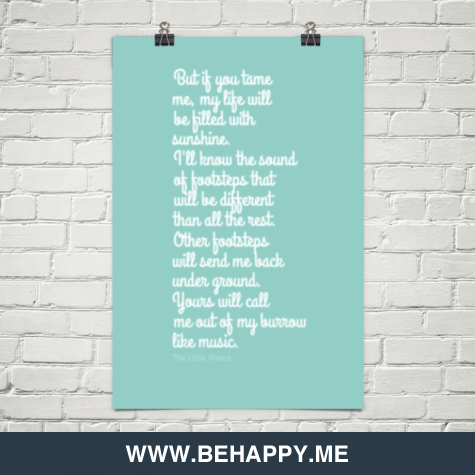 If you let go you would both have to take a step back to prevent falling. This principle of holding each other’s weight is fun and can be used in many moves.
If you let go you would both have to take a step back to prevent falling. This principle of holding each other’s weight is fun and can be used in many moves.
Leading from the body
If I transfer some movement from my body to your body, I can initiate that movement from any part of my body. For example, if I chose to pull you one centimetre towards me whilst I face you holding your hands, I can pull with my fingers, or my wrists, or my elbows, or my shoulders. I could hold my arms in a solid frame and just lean back a centimetre. Or I could make a frame of my whole body and shuffle my feet back one centimetre. The interesting thing is that each of those choices will feel different to the follower. Each unique muscle movement transmits a slightly different message. Leading by moving your arms works less well than moving your whole body. You will feel a more solid connection. Great partner dancing is a lot to do with great connection.
How to follow
At 3am in the middle of a London summer on a bridge across the Thames, a tall and slightly androgynous figure asked me if I would like to ‘follow’.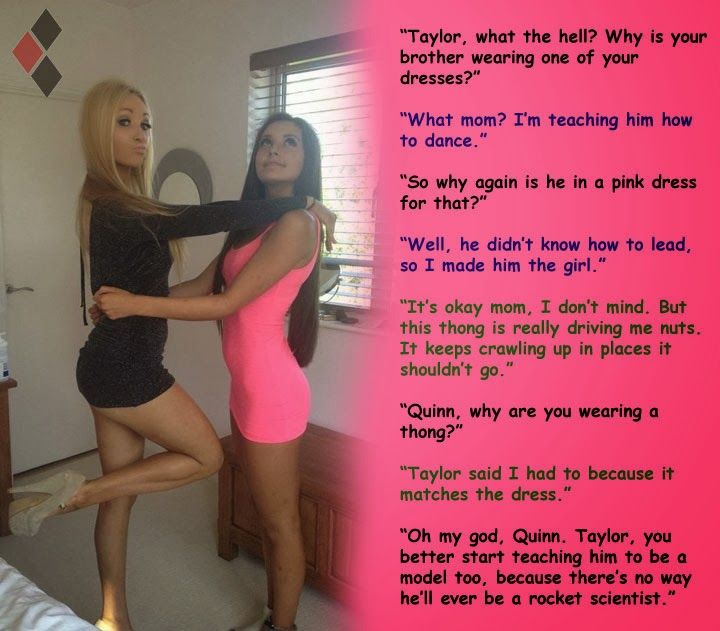 That is to assume the role that is traditionally taken by women. At that time I’d been partner dancing for at least 5 years but I had never experienced what it was like to be in the other role. With some apprehension and curiosity I agreed. She was a great lead. Everything was so clear. I could feel what she wanted my body to do and it was great fun. It instantly changed how I lead others because I could imagine better what the other might be experiencing. We can learn lots in someone else’s shoes.
That is to assume the role that is traditionally taken by women. At that time I’d been partner dancing for at least 5 years but I had never experienced what it was like to be in the other role. With some apprehension and curiosity I agreed. She was a great lead. Everything was so clear. I could feel what she wanted my body to do and it was great fun. It instantly changed how I lead others because I could imagine better what the other might be experiencing. We can learn lots in someone else’s shoes.
Discovering the Blues
In February 2011, Justin Riley came to London to teach a dance I had barely heard of. The way he and his teaching partner Gaia moved together astonished me. I had been dancing eight years but they showed a fluidity and degree of connection I’d never seen before. During the practice session after the class an experienced blues dancer explained to me “It feels like you are floating”. That statement stayed with me ever since. I wanted to ‘float’ and make others feel like they were floating too. Blues quickly became my favourite and has been ever since.
Blues quickly became my favourite and has been ever since.
I love the Blues for many reasons. The Ballroomers taught me to ballroom, the Lindy Hoppers taught me to Lindy but the Blues-ers taught me to dance. They teach you deeper fundamentals from the beginning. These fundamentals are the secrets of deeper learning. You learn faster when you can focus on the pivotal skills. Many disciplines withhold such teachings, like some kind of secretive arcane school. As a metalearner, I believe this is a waste. It slows your progress and engagement. The advanced piano technique I learnt as an adult would have helped engaged me better in piano as a young adolescent. Beyond teaching method I just love the Blues. It has a rare authenticity that grew out of the suffering of slaves shipped to the Americas. The earliest forms don’t have drums because they were forbidden. The controlling powers considered drum beating too militant an activity to be allowed, but they could still sing! Some great art has come out of suffering, and the African slaves truly suffered.
Key things I learnt from Blues
Relax
To dance the Blues you first need to relax. My background in ballroom made this hard. Latin Ballroom movement is often tense and electric in quality and this invites muscular tension. Competitive Ballroom is less about connection because your partner knows what’s coming next. She doesn’t need to interpret the subtlest messages that come through your touch. I was surprised to discover that loose ‘spaghetti arms’ transmitted more information about my partners body than a tight frame might. Stiff frames are great for moments like lifting or spinning your partner fast, but they won’t let you ‘float’ together in the subtleties of the music. Tightness in your arms acts like a barrier to sensing. The more sensitive instruments of perception are the lightest.
It is a challenge to put into words what this feels like. Imagine you are blindfolded and someone hands you a sword. Waving it in the air you will be able to feel how stiff the blade is. A floppy blade will vibrate its wobbles through the handle without you ever seeing it. You can probably even sense the length of the blade by the momentum it carries as you move it. Like this you can perceive much of your partner’s movement with your eyes closed.
A floppy blade will vibrate its wobbles through the handle without you ever seeing it. You can probably even sense the length of the blade by the momentum it carries as you move it. Like this you can perceive much of your partner’s movement with your eyes closed.
Balance and weight placement
Balance is of course an important fundamental in any physical activity, but how you improve it is hard to put into words. It is a felt-sense that words struggle to capture. My ballroom teacher Gillian taught me to imagine a pile of children’s bricks. If you imagine all your bones standing on top of each other with nothing holding them together it might make you place your weight more precisely. That metaphor didn’t work for me. My first Blues teacher Justin Riley taught me to place my weight as though I was riding a surfboard or a horse. I had snowboarded and this made perfect sense to me. My dancing changed overnight. Every step I took felt more certain, more solid and my partners could feel it.
If you are a little off balance on a bicycle, a skate board or a horse, and you hit a bump, you will fall off. If you place your weight in the right place you feel ready for almost any bump. You have a centre of gravity that feels powerful and prepared. The antithesis to this we call ‘tea potting’ — to sway your weight side to side like a metronome. Everything is less certain without a stable centre of gravity. It is harder to lead or follow. However, when you have the right centre of gravity, you feel prepared for anything. You can sense the other’s movement more clearly just as a steady telescope sees much further.
Tone matching
I have mentioned two contrasting , even contradictory types of connection: the relaxed loose ‘spaghetti arms’ for a more subtle connection and the stiff frame necessarily for transmitting faster high energy movements. How do you have both? ‘Tone matching’ is the skill of matching the tenseness or relaxedness of your partner. This way you can have either type, and anywhere in between, as and when you want it. When the length of your bodies touch (called close hold) there is no need for tense arms because you can directly feel your partners entire body move. To lift or throw my partner at the climax of a song we will need to ‘tone up’. My partner will feel the intensity in the music as she feels the tension building in my body. She (or he) matches my tone. We have both retuned our radio frequencies but are still on the same wavelength. With this ability to communicate through touch, it is possible for two complete strangers to instantly perform a dance that the uninitiated would think was choreographed.
This way you can have either type, and anywhere in between, as and when you want it. When the length of your bodies touch (called close hold) there is no need for tense arms because you can directly feel your partners entire body move. To lift or throw my partner at the climax of a song we will need to ‘tone up’. My partner will feel the intensity in the music as she feels the tension building in my body. She (or he) matches my tone. We have both retuned our radio frequencies but are still on the same wavelength. With this ability to communicate through touch, it is possible for two complete strangers to instantly perform a dance that the uninitiated would think was choreographed.
A lead so light she can steal it
Now that I have transcended the need for a fixed frame, I learn that we can even blur the line between leading and following. As my body speaks in light movements I can simultaneously ‘hear’ the movement she ‘speaks’. This isn’t possible if my body is in a tense frame. Our separate movements can attune and co-create movement together. This grey area between leading and following reminds me of an exercise I did in an improvised theatre class: on being asked a question like ‘What is your name?’ a group of us had to reply simultaneously feeling for a single voice. Listening to each other our voices converged and we could say things that made sense. Whilst all parties contribute to the voice, no individual chooses the final words. I have experienced some beautiful moments on the dance floor where we are both surprised and delighted at the movement we create. In that subtle realm of light leading it is also easy for the follow to seamlessly ‘steal’ the lead. You might pass is back and forth numerous times in a single dance. This way we move beyond the patriarchal lead-follow paradigm of ‘the lady must surrender’. Together we enter a world of harmoniously equal voices.
Our separate movements can attune and co-create movement together. This grey area between leading and following reminds me of an exercise I did in an improvised theatre class: on being asked a question like ‘What is your name?’ a group of us had to reply simultaneously feeling for a single voice. Listening to each other our voices converged and we could say things that made sense. Whilst all parties contribute to the voice, no individual chooses the final words. I have experienced some beautiful moments on the dance floor where we are both surprised and delighted at the movement we create. In that subtle realm of light leading it is also easy for the follow to seamlessly ‘steal’ the lead. You might pass is back and forth numerous times in a single dance. This way we move beyond the patriarchal lead-follow paradigm of ‘the lady must surrender’. Together we enter a world of harmoniously equal voices.
Follows move like asteroids in space
When you follow the movement of another, think of yourself moving like an asteroid that obeys Newtonian physics. That is, you keep moving with the same speed, direction and rotation until you come into contact with something that changes your movement (usually an intercepting hand or arm). Don’t just stop of your own accord — asteroids don’t slow down and stop like they are moving through treacle. If you are travelling across the dance floor keep travelling. If you are rotating (asteroids also do this) keep rotating. This principle allows the leader to predict the movement of your body, and to create movement with continued effect (whichever of the two happens to be leading).
That is, you keep moving with the same speed, direction and rotation until you come into contact with something that changes your movement (usually an intercepting hand or arm). Don’t just stop of your own accord — asteroids don’t slow down and stop like they are moving through treacle. If you are travelling across the dance floor keep travelling. If you are rotating (asteroids also do this) keep rotating. This principle allows the leader to predict the movement of your body, and to create movement with continued effect (whichever of the two happens to be leading).
Musicality
During the Ballroom competitions we had to dance the same routine whatever music came on. Every round of the competition was a different song. This felt limiting because different music suggests different movement. In a Blues social dance I feel like we ‘jam’ with the musicians. The music tells our bodies what to do, adding extra colour to the music. The music, the lead and the follow become one rich tapestry. The music is the true leader: we skip to punctuate the phrase endings, stretch upwards as the musical pitch rises, leap to hit the climax of the song, tap the multiple rhythms with separate body parts (your feet mark the straight beat on the drums, your shoulders mirror the syncopated guitar).
The music is the true leader: we skip to punctuate the phrase endings, stretch upwards as the musical pitch rises, leap to hit the climax of the song, tap the multiple rhythms with separate body parts (your feet mark the straight beat on the drums, your shoulders mirror the syncopated guitar).
Dancing to live music you notice the chemistry between jazz and blues musicians who also improvise with each other in the moment, often communicating much through their eyes, following each other, switching which member of the band has the lead. The aliveness and spontaneity is electric. To see the subtle chemistry between the musicians echo through the connections across the dance floor is truly wondrous. A hundred people intimately connected to a sound improvised moment to moment. We love the musicians and they love a dancing audience who feel their music so deeply. A joy multiplied.
Never stop moving
All forms of art are composite creations. That is, they are formed from multiple parts. The separate parts contribute to the whole. A dance is a linear work through linear time. Like the music is follows it has a beginning, middle and end. You body has multiple limbs that can be moved in infinite combinations and shapes. Dance flows from one movement to another, each move influencing what may follow it, each position having its unique possibilities. We choose a chain of moves that elegantly dovetail. As with any art form a ‘composition’ interconnects it’s separate parts. We present the separate moves as part of a whole, not isolated pieces. A simple trick to emphasise this is to keep moving — a slight movement of a shoulder can be enough to keep the dance alive during a pause in the music. Never stop dancing until the music ends. An exception to the principle is a ‘freeze’ in which you emphasise the lack of movement to make a point. You are therefore clearly still dancing even during a freeze as it has a striking effect.
The separate parts contribute to the whole. A dance is a linear work through linear time. Like the music is follows it has a beginning, middle and end. You body has multiple limbs that can be moved in infinite combinations and shapes. Dance flows from one movement to another, each move influencing what may follow it, each position having its unique possibilities. We choose a chain of moves that elegantly dovetail. As with any art form a ‘composition’ interconnects it’s separate parts. We present the separate moves as part of a whole, not isolated pieces. A simple trick to emphasise this is to keep moving — a slight movement of a shoulder can be enough to keep the dance alive during a pause in the music. Never stop dancing until the music ends. An exception to the principle is a ‘freeze’ in which you emphasise the lack of movement to make a point. You are therefore clearly still dancing even during a freeze as it has a striking effect.
How dancing changed me
Psychologists analyze behaviour in terms of what it moves us away from and what it moves us towards.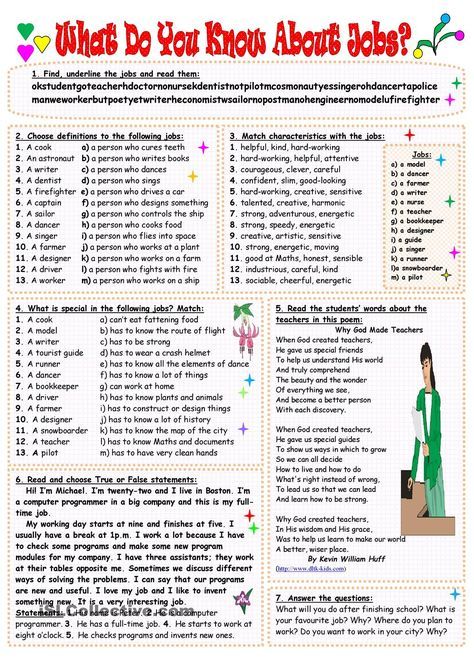 Was I dancing away from something? I grew up in an old fashioned English school designed to make me conform. We were even beaten for speaking out of turn. I wore a uniform and tie every school day from age four. There were no girls there to dance or flirt with. Girls were kept away in the girl’s school. This was a context where most men would be afraid to dance. Dancing was something for a ‘girl’ or a ‘woman’ — both terms often said with a pejorative tone. You wouldn’t want to stand out as it might get you laughed at. I was supposed to follow the rules without question, and with an English stiffness. I was never very good at doing as I was told but when I left I was still uneasy talking to the opposite sex. When I took up dance I was definitely dancing towards women. I had no idea how that Latin movement would help break me out of my English stiffness. A stiffness that had trapped me since school and possibly a motivation for becoming multilingual.
Was I dancing away from something? I grew up in an old fashioned English school designed to make me conform. We were even beaten for speaking out of turn. I wore a uniform and tie every school day from age four. There were no girls there to dance or flirt with. Girls were kept away in the girl’s school. This was a context where most men would be afraid to dance. Dancing was something for a ‘girl’ or a ‘woman’ — both terms often said with a pejorative tone. You wouldn’t want to stand out as it might get you laughed at. I was supposed to follow the rules without question, and with an English stiffness. I was never very good at doing as I was told but when I left I was still uneasy talking to the opposite sex. When I took up dance I was definitely dancing towards women. I had no idea how that Latin movement would help break me out of my English stiffness. A stiffness that had trapped me since school and possibly a motivation for becoming multilingual.
My Ballroom teacher Gillian Smith would enthusiastically announce “Dancing is about one thing, and that is looking good!” The world of ballroom dance competitions gave us all access to another world where different rules applied.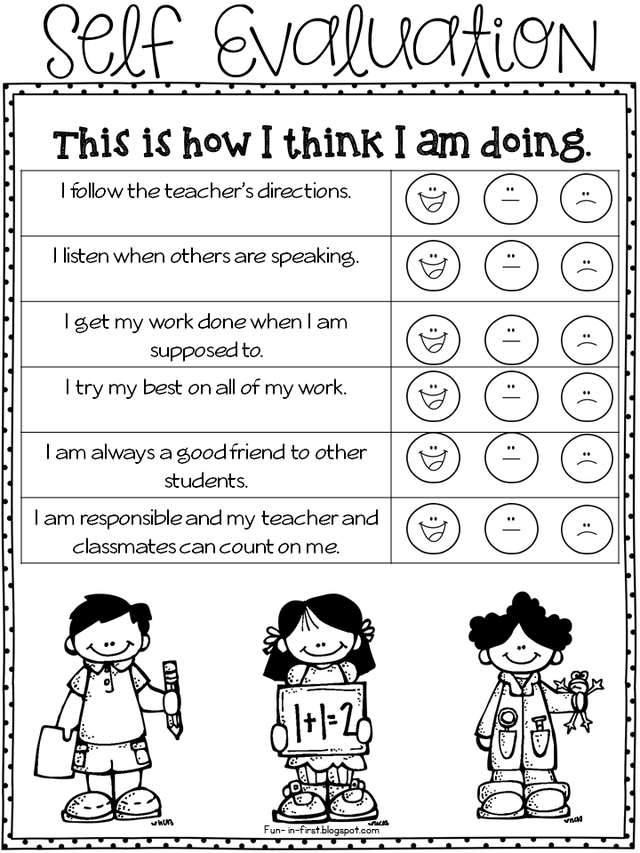 Irrespective of your gender or sexuality, we were required to Latinize ourselves with fake tan and hair spray. We had to wear over the top sparkly costumes. Then we had to go onto the stage draw attention to ourselves as much as we could. Routines, with their entries and exits, were calculated to ensure the judges saw your number as much as possible. We would ‘travel’ up and down the dance floor to make sure they all had the opportunity to see how fabulous we were. The judges were dotted around the edge of the dance floor in a circle, so we would engineer rotation into all routines so that our number (pinned to my back) would be visible in all directions. Then we would leave the floor taking the longest route so that we were on the dance floor as long as possible. We were coached to be primadonnas, to grab as much attention as possible. The complete opposite to my conformist upbringing, my inner introvert, I had found a path to extraversion. It’s OK to stand out when you can dance!
Irrespective of your gender or sexuality, we were required to Latinize ourselves with fake tan and hair spray. We had to wear over the top sparkly costumes. Then we had to go onto the stage draw attention to ourselves as much as we could. Routines, with their entries and exits, were calculated to ensure the judges saw your number as much as possible. We would ‘travel’ up and down the dance floor to make sure they all had the opportunity to see how fabulous we were. The judges were dotted around the edge of the dance floor in a circle, so we would engineer rotation into all routines so that our number (pinned to my back) would be visible in all directions. Then we would leave the floor taking the longest route so that we were on the dance floor as long as possible. We were coached to be primadonnas, to grab as much attention as possible. The complete opposite to my conformist upbringing, my inner introvert, I had found a path to extraversion. It’s OK to stand out when you can dance!
Presence revisited
Those knockout competitions were intense experiences. You knew that every dance might be your last. When we heard our numbers called for the next round the whole university team would cheer for you. I remember feeling more present than I had ever felt before during one of those competitions. The pressure to perform boosted my engagement in the moment. Each dance had to be better than the last. Stage actors have told me they feel incredibly alive when acting in the limelight. Ballroom dance competitions can have a similar effect: I was required to perform to the best of my ability in a very narrow window of a three-minute song, whether I liked the music or not. Once I got elbowed in the face mid-performance but I smiled on.
You knew that every dance might be your last. When we heard our numbers called for the next round the whole university team would cheer for you. I remember feeling more present than I had ever felt before during one of those competitions. The pressure to perform boosted my engagement in the moment. Each dance had to be better than the last. Stage actors have told me they feel incredibly alive when acting in the limelight. Ballroom dance competitions can have a similar effect: I was required to perform to the best of my ability in a very narrow window of a three-minute song, whether I liked the music or not. Once I got elbowed in the face mid-performance but I smiled on.
Isolation revisited
To learn to move more and more parts of my body made me feel more ‘embodied’, more sensual generally. I became more aware of my posture and physical presence. When in a playful mood I feel more like moving just for the sake of moving, like a panther that enjoys the feeling of every step, as though each movement is an expression of my aliveness.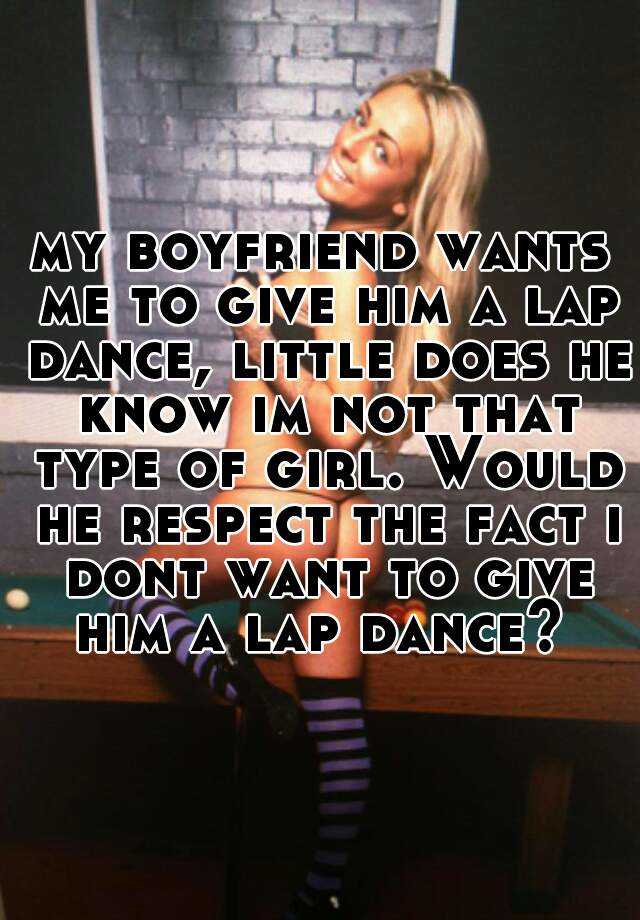
Flirtation revisited
My single sex segregated upbringing did not prepare me well for flirting. Aged 17 I even bought a book on ‘Flirting’. It graded its readers based on our attitudes to the book. I was in the lowest category: “You will hide this book away out of embarrassment”. Like many stiff Englishmen my track record of approaching women I was not that of a Latin ‘Fonz’. It was more like the subdued Anthony Hopkins character in the film “The remains of the day” lacking the courage to make a move at all. English literature is full of such men. After my Latin Ballroom flirtation training I was different, replete with a range of playful skills. I had the confidence to invite anyone onto the dance floor, the confidence to flirt with anyone with danceable music playing. I could be very subtle with the gentlest squeeze of a hand, or much more blatant. My most outrageous dance flirtation I’ve done was to bite a woman on the neck on halloween like I was some kind of werewolf. Not a typical dance move. Don’t try this indiscriminately! She was a little surprised but went on to date me for 4 months.
Not a typical dance move. Don’t try this indiscriminately! She was a little surprised but went on to date me for 4 months.
To lead and follow revisited
Leading and following, like domination and submission, are a factor in all relationships. Perfect equality cannot happen 24/7. How a person leads, or doesn’t lead, follows or doesn’t follow says a lot about their personality. Can you trust another to move your body? Are you indecisive in your lead? Dancing, especially the blues community, encourages us to transcend fixed gender roles that society might impose. We don’t assume a women is ‘a follow’ or a man ‘a lead’. Gender stereotypes can also be shells that constrain your life. How many opportunities for love or friendship were lost because we were afraid of saying what we thought? The price of authenticity, of intimacy is often a moment of vulnerability. Our roles protect us from our fears of rejection. “It’s unladylike for her to pursue a man, so just look pretty and don’t make a move”. “It’s unmanly to get emotional, so don’t show her you care too much.” Juno Dawson says “Gender fucks us all.”
“It’s unmanly to get emotional, so don’t show her you care too much.” Juno Dawson says “Gender fucks us all.”
We all have a male and female side to explore. Partner dance naturally leads to playing with both sides of nature’s dichotomy. At a certain level you will have to learn both roles to better understand the opposing role and to be in a position to teach. It is an imbalance to study only one half of the equation. It is also fun and enlightening to experience different roles. Who would be content with only one role in life? In the blues dance community it is not uncommon to meet men and women who dance both roles without it being a statement of sexuality. Men dance with men and women dance with women, and often switching roles multiple times within the same 3minute song. “Do you prefer to lead or follow? “I like to switch. Do you?” Switching makes the dance experience even more of a conversation, a deeper alchemy of contrasting elements. My most memorable dances were when the lead-follow paradigm dissolved and we found a sweet spot between these ends of the spectrum. Both knowing a language of physical music we can just let it say what it has to say.
Both knowing a language of physical music we can just let it say what it has to say.
My 15 years experience as a teacher of mindfulness-informed therapies have taught me that awareness, especially its expansion has a lot to do with switching perspectives. Every viewpoint is limited, so simply changing viewpoints can be enlightening. There are an infinite number of viewpoints to try out. Human affairs are relational. We are a social species with social problems. To look through the eyes of another is educational. Numerous artworks capitalise on this phenomenon. The film ‘Tootsie’, a masterpiece staring Dustin Hofman ends with him saying — “I was a better man as a woman with you than I ever was with a woman as a man.” He had dressed as a woman to get an acting job. When Beyoncé sings about if she were a boy: I’d listen to her, ’cause I know how it hurts”.
If you let it, the music just takes you. The music is the leader. I have to love the music to do this, but when I do any self-consciousness I have vanishes. The joy in the music is bigger than my fears, and this draws people in.
The joy in the music is bigger than my fears, and this draws people in.
Consent
Partner dancing is intimate, especially in blues. In one night I might hold 20 people in close embrace, cheek to cheek. Such intimacy with strangers gives you practise in attuning to the needs and comfort zones of others. It is possible to propose closeness with a bodily position, an invitation that your partner can take or leave. Like in any relationship where you are close enough to hurt each other (elbows are deadly weapons), it’s a mistake to assume too much, to get too close without being highly sensitive. If your ‘lead’ is pulling you too close, place your right forearm on the front of their left shoulder and apply gentle pressure. They should get the message. As a lead, present your partner with an open frame as they turn towards you. Their momentum (moving like an asteroid towards you) will carry them into your open arms. Your ‘follow’ will sense the invitation and may choose to move closer.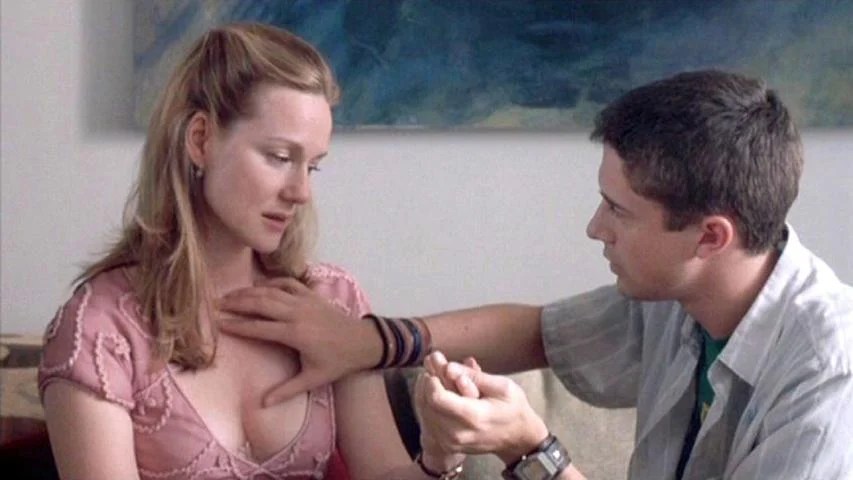
More than looking good
One of the first things my Ballroom teacher taught me was that dancing was all about looking good. Blues emphasised another side: feeling connection. This led me to often asking myself a question that seems to be a good life question: ‘What’s more important, what it looks like or what it feels like?’ Living has two striking sides: outward appearance and inner experience. It’s often important to have the right appearance to win over your judges. A well executed dance can fill onlookers with awe. It was the outward appearance of blues that initially drew me to it but the inward feeling that hooked me. Your romantic partner might look beautiful but will you stay together with the wrong feeling? Often there is a correlation between the two: what looks good also feels good. However my inner blues dancer leans towards prioritising the inner sense. The depths of human connection carry us to places looks never can. Human connection is the principle reward for living.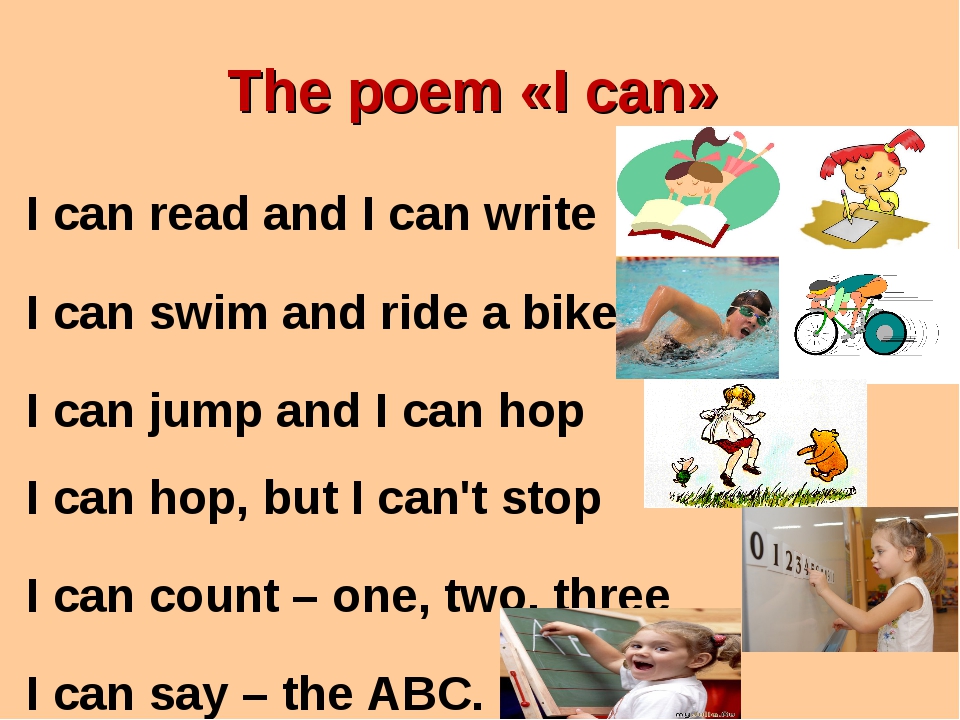
The world of today is known for its isolation and separation. There is a lot of scientific evidence to show that loneliness is as bad for you as smoking: people die early from it. Relational psychotherapies teach us to bridge the gap between separate worlds with questions like “What is that like for you?” and “What do you think that is like for me?” In partner dancing you come close to sensing physically the other person’s inner physical world. I dare say this can be a useful piece in solving the loneliness epidemic. Let’s dance!
An improvised dance — neither of us know what we will do more than a few seconds in advance. The music and our connection give us ideas as we go. I hadn’t danced in 5 weeks at the time, have terrible posture but I’m still posting it because it captures the fun and the connection.interpretation of dreams about dance according to the dream books of Miller, Vanga, Freud, Loff
Despite the joy and delight experienced by people dancing in a dream, this is often considered a bad omen that portends difficulties. But is this interpretation always correct? In every popular dream book, this action has its own symbolism and meaning. Let's figure out why we dream of dancing and how to correctly interpret such a dream.
But is this interpretation always correct? In every popular dream book, this action has its own symbolism and meaning. Let's figure out why we dream of dancing and how to correctly interpret such a dream.
Dance in a dream according to the dream book
MillerAccording to the interpretation of Miller's dream book, seeing yourself dancing in a dream is a good sign. Your old ideas and dreams will begin to come true.
Also, the interpretation of the dream depends on how the dance was. Fast - you should be careful about the upcoming business, they can be difficult and unsafe. Slow - speaks of your inner desire to relax.
If a girl dreams of dancing children, it means that her family will live in harmony. For men, such a dream is a prerequisite for an interesting pastime. nine0003
For men, such a dream is a prerequisite for an interesting pastime. nine0003
Old people who were dancing in a dream are considered a sign of the coming succession of successes. But strangers are a bad signal. He says that you are afraid of communicating with others.
Seeing yourself dancing under a tree is a warning. Changes are waiting for you, but it is worth taking certain measures to implement them.
Dancing with friends in a dream will be a harbinger of a good weekend.
Dance in a dream according to the dream book
FreudFreud's dream book also speaks of the good meaning of dancing in a dream. All past problems will pass by themselves, and you will breathe a breath of fresh air.
If the craving for dancing in a dream was never realized, that is, you wanted to dance, but did not dare, then you should think about it. You have a huge potential that you do not want to reveal, referring to the fact that it is not serious and not important.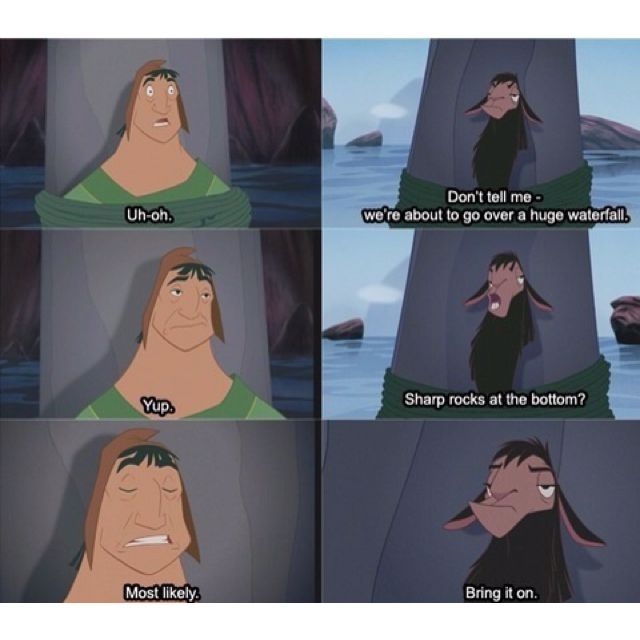
Watching the most beautiful dance from the side is a cry from the soul. In real life, you have a dream that you are afraid to fulfill. Consciousness suggests that it is still worth deciding on this step, contrary to moral prohibitions. nine0003
A dream about a naked dance speaks of a desire for freedom.
An interesting sign is a dream in which among the dancers you see a familiar person. Probably, fate will connect you with him in the future.
A dream where you are dancing in a crowded place speaks of your fear of the public.
Dancing in a dream according to the dream book
HasseThe interpretation of dancing according to Hasse's dream book is as follows: the dreamer expects joy and wealth. And if you danced on stage, then a wave of popularity is coming. nine0003 According to Hasse's dream book, to see a dance in a dream - joy and wealth await you. Photo: andrea-piacquadio, pexels.com
A dream about dancing with a representative of the opposite sex suggests that you have a lot of envious people. But if the partner is your loved one, then the dream is interpreted much more pleasantly. Order and complete mutual understanding await your family, and those around you will be sincerely happy about this.
But if the partner is your loved one, then the dream is interpreted much more pleasantly. Order and complete mutual understanding await your family, and those around you will be sincerely happy about this.
If during the dream the locations in which you danced changed each other, this is a sure sign that you should change the situation or even reconsider your habits. nine0003
Dreams of dancing under the sunlight speak of the desire for enlightenment.
A dream is a harbinger of participation in large mass events, where a lot of strangers are dancing besides you.
Dancing in a dream according to the dream book
TsvetkovaAccording to the interpretation of Tsvetkov's dream book, dancing alone is a symbol of success and profit. But dancing with a partner is a harbinger of illness.
People dancing in the twilight in a dream talk about the appearance of a deceiver in your environment in reality. nine0003
Dancing under the moon is a sign of aggression that you are skillfully trying to hide.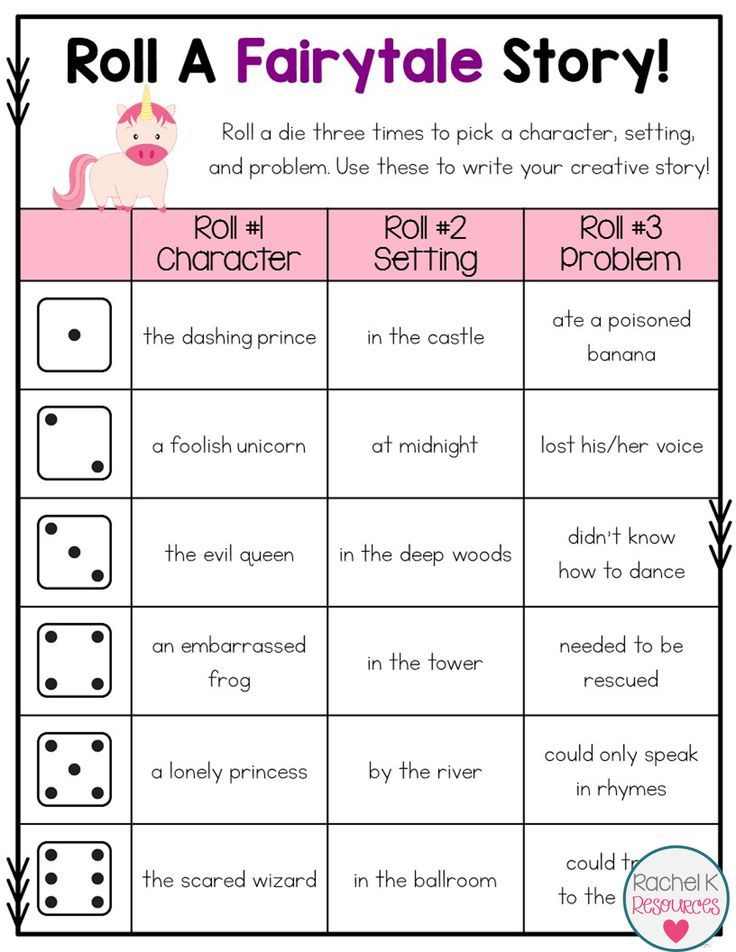
To see yourself in a dream dancing with professionals - to useful acquaintances.
Dancing by the fire is a positive sign for you. He says that in the near future secret desires will begin to come true.
Parting with a loved one portends a dream where you are dancing in full view of everyone. But this separation will be temporary. Probably, your relative will go abroad or to another city on vacation. nine0003
Dancing in a dream according to the dream book
VangaThe interpretation of Vanga's dream book, relative to others, is not so positive. According to him, to see yourself dancing in a dream speaks of attracting too much attention to your person. And if you are dancing in a crowd, you are likely to be robbed.
A short but memorable dance is a harbinger of rash acts for which the dreamer will have to apologize.
Long dances - you should reconsider your attitude towards other people. Probably, recently you have become too callous, and do not notice how you use others for your own benefit. nine0003
nine0003
Dancing in a dream according to the dream book
LoffaThe dream in which you see yourself dancing indicates that the professional field of activity is of particular importance to you. If the movements in the dance look unnatural, your subconscious mind wants to convey the idea of non-recognition by society. A dream about dancing with a partner also indicates an uncomfortable feeling of being among people.
If others are dancing for you in a dream, then you should take a closer look at the dance, as it reflects your attitude towards these people. nine0003
A sign of self-doubt in reality is a dream in which music and dance are not compatible, or you are completely dancing without musical accompaniment.
Dancing in a dream according to the Modern dream book
The modern dream book notes dancing in a dream as a symbol of the successful completion of business.
Interpretation depends on the style of dance:
- waltz - to fleeting experiences;
- slow dance - to a period of difficult relationships with a loved one; nine0098
- fast dance - to approaching problems;
- tango - to beautiful courtship.
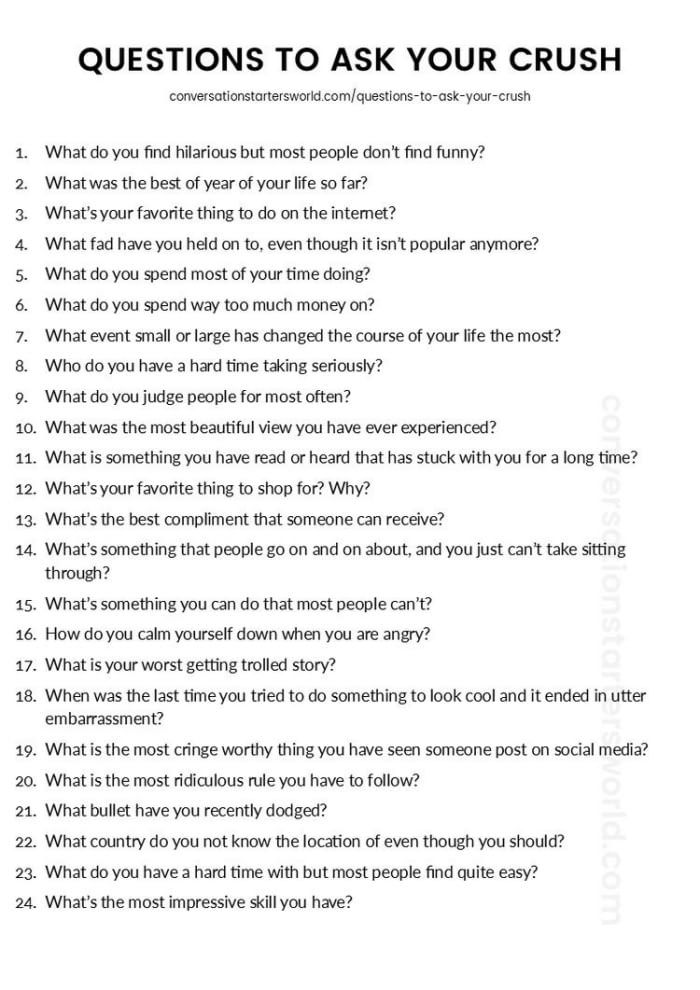
Also, the interpretation depends on the gender of the dreamer. Dancing in a dream for a girl is a quick joy. For a guy - to the coming ruin.
Expert's comment
In addition to all the above interpretations, experts-psychologists discuss this issue. For us, the answer to the question "why dream of dancing?" gives Veronika Tyurina, psychologist-consultant in the field of interpersonal relations :
When you dream that you are dancing, it speaks of your temperament, your taste for life and your general desire to enjoy socializing with other people. You try to arrange any cooperation in such a way that you are psychologically comfortable.
If you dream that others are dancing, and you stand on the sidelines and watch, this indicates your excessive restraint in communication with people. You do not show yourself enough, you are silent where you could say your word, and deep down you want to fix it. nine0003 When you have a dream in which you are dancing, this speaks of your temperament, your taste for life. Photo: silvio-barbosa, pexels.com
Photo: silvio-barbosa, pexels.com
If in a dream you are invited to dance, and you agree, this is a sign of outward favor of someone close to you. There will be favorable conditions and opportunities for the implementation of the plan.
If, in response to an invitation, you are embarrassed and refuse, this indicates your internal unpreparedness for the ongoing changes. You want to slow down and catch your breath a little, you are afraid to make a mistake by following fate. nine0003
To dream of an ugly dance means that you are overcome by doubts, uncertainty, inability to make a decision - you may be afraid to part with those people on whom you depend, but at the same time you understand that you cannot tolerate it any longer.
Admire the dance of others in a dream - you give up and do not take the initiative where you could do it, or you think that you are not good enough to openly declare yourself in your professional activities.
Girls and break dancing, B-Girls
Today, seeing a girl as a bearer of hip-hop culture is no longer as unusual as some five years ago. Hip-hop is progressing day by day and today it can rightfully be considered a developed culture, popular all over the world and Russia is no exception. Hip-hop dances are progressing day by day and today there are much more girls than guys in hip-hop dance training, but this was far from always the case.
Hip-hop is progressing day by day and today it can rightfully be considered a developed culture, popular all over the world and Russia is no exception. Hip-hop dances are progressing day by day and today there are much more girls than guys in hip-hop dance training, but this was far from always the case.
Here is my (once very relevant) article from 2005 on the issues of girls in hip-hop culture. True, then they danced mainly break dance, hip-hop dance in the form in which it is now - it was just in its infancy. Therefore, the article will be especially interesting for girls who are studying or are going to learn how to breakdance. nine0003
"Seeing a girl as a carrier of hip-hop culture is unusual for many people... Some people have never encountered them, many consider them a curiosity, others do not take them seriously at all... Before taking on the problems of girls in the world of hip-hop, I read a lot articles on the same topic, but in none of them did I find clear answers to questions that prevent b-girls from sleeping at night. By visiting even local forums, you can see a lot of unceasing disputes about girls in wide pants, etc. It's a shame, that many guys (included in the culture) and girls (not included in the culture) fundamentally underestimate the abilities of a b-girl, or simply ignore them and reward them with ridicule in the style: “Like, girl, don’t even poke your head ...” But, if you look on the other hand, the girls who were able to achieve something, and it doesn’t matter if it’s a break or rap, are worth their weight in gold, surrounded by constant attention, fame and respect, and it doesn’t matter to anyone that there are guys who can do more ...
By visiting even local forums, you can see a lot of unceasing disputes about girls in wide pants, etc. It's a shame, that many guys (included in the culture) and girls (not included in the culture) fundamentally underestimate the abilities of a b-girl, or simply ignore them and reward them with ridicule in the style: “Like, girl, don’t even poke your head ...” But, if you look on the other hand, the girls who were able to achieve something, and it doesn’t matter if it’s a break or rap, are worth their weight in gold, surrounded by constant attention, fame and respect, and it doesn’t matter to anyone that there are guys who can do more ...
I grew up in the provinces, and it’s generally hard to find like-minded people here ... When I first started, all the bearers of culture who were more or less seriously interested in this, most often knew each other by sight and we tried our best not to lose touch between themselves. Then I could not even think that one day I would meet a girl who would dance break dance or rap . .. But, over the years, as I became more and more famous and respected person in dedicated circles, I became more and more girls are asking to teach them how to break dance, rap, draw graffiti. Most often they were single b-girls who did not even dream of finding associates for themselves ...
.. But, over the years, as I became more and more famous and respected person in dedicated circles, I became more and more girls are asking to teach them how to break dance, rap, draw graffiti. Most often they were single b-girls who did not even dream of finding associates for themselves ...
I remember one day, around 2003, a girl came up to me and asked me to join her breaker team. I remember that I was very surprised and, obviously underestimating her, said: “No. I feel sorry for you". But, the girl was stubborn, and I agreed to look at her in action. Imagine my surprise when she made a gelik, of course, very feminine, not at all like the guys, but she did!
On one of the sites, I saw a published letter from a single b-girl, which, in principle, contains most of the main problems:
Hello! I have a few questions for you that are very important and relevant to me. For 1.5 years now I have been doing the lower break, but due to frequent moves and exams, it was not always possible to train regularly. Something turns out, but there is still a lot of work. I seem to be a capable girl, and even such an advanced age for sports (17 years old) does not interfere with me. I'm not afraid of pain, now I'm learning Gelik.
Something turns out, but there is still a lot of work. I seem to be a capable girl, and even such an advanced age for sports (17 years old) does not interfere with me. I'm not afraid of pain, now I'm learning Gelik.
But that's not the point. I've come across vicious discrimination against women in the break many times. I've been told to my face more than once that a girl should be just an adornment for her breaker boyfriend. Like, girl, don’t even poke your head ... But I’m an extreme child, I continue to practice. nine0140
Do you think breaking is a woman's job? Why is it that every time I get up on my hands, the guys are delighted, although there is nothing special about it, and when I fall and hit, they are collectively sorry? They do not spare themselves, but they lecture me on the need to be careful. I'm embarrassed to train and perform!!! The most annoying thing is that I don’t know any b-girl personally.”
I will try to answer the questions, but first, I want to say that this is just my point of view and many people think differently.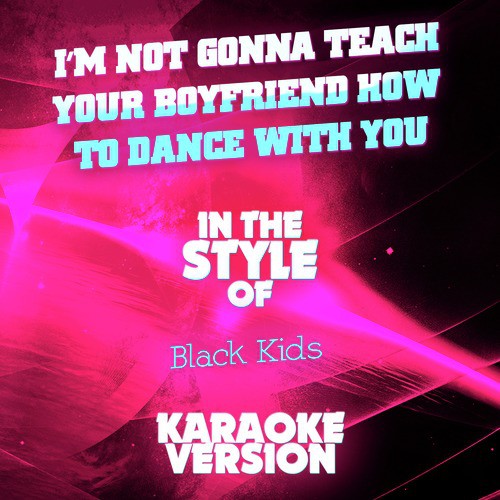 So let's get started:
So let's get started:
“Do you think breaking is a woman’s business?”
Answering this question, I would like to add that a couple of years ago I would have answered quite differently… More recently, I would have said: “No, what are you! Can a girl break? It's wild, and besides, it's useless ... ". But, they say, time heals. And I say - time teaches. Now, based on my own life experience, I can say that a girl in any business can remain feminine and break dancing can also be feminine. Various "experts" of this art will try to challenge me, arguing that a break is necessarily a rotation on the head and other parts of the body, acrobatic elements, wide pants, overalls, bruises, permanent injuries, inflated muscles, etc. It's not like that at all. There are many different directions in breaking, some of which, I would say, are even more suitable for girls than guys. Here it all depends on which path the b-girl chooses for herself. It is worth noting that breakdance, starting from the second part of its word, is primarily a dance.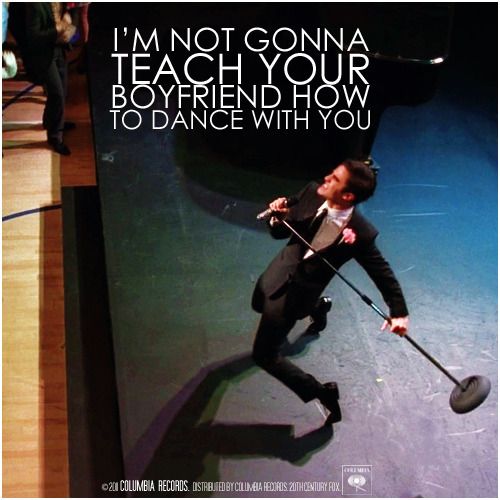 And girls often move to music even better than guys. And this is a fact. And if dancing is natural for girls, then why not dance? From myself I want to say: Dear girls, don't think that breakdance is only strength + rotation. Breakdance is a dance, the ability to get into the rhythm, the individuality of performance, self-expression and much more ... so, my answer is: it doesn’t matter who you are, a guy or a girl, the main skill is “to show what you are worth, not in words.” nine0003
And girls often move to music even better than guys. And this is a fact. And if dancing is natural for girls, then why not dance? From myself I want to say: Dear girls, don't think that breakdance is only strength + rotation. Breakdance is a dance, the ability to get into the rhythm, the individuality of performance, self-expression and much more ... so, my answer is: it doesn’t matter who you are, a guy or a girl, the main skill is “to show what you are worth, not in words.” nine0003
“Why is it that every time I stand up on my hands, the guys get excited, although it’s nothing special, and when I fall and hit, they collectively regret it?”
Well, again, starting only from my own point of view, I can say that it is still unusual for many guys to see a girl in a break. They regret it because girls are still the weaker sex ... And scars adorn only men ... My own younger sister is engaged in a break and I would not want to see her in bruises, abrasions and scars . .. Therefore, my advice to you, girls: you don’t have to dance the way guys do it, individuality is much more appreciated in the break, the main thing is to perform beautifully and smile more often ... Dance more, girls. nine0003
.. Therefore, my advice to you, girls: you don’t have to dance the way guys do it, individuality is much more appreciated in the break, the main thing is to perform beautifully and smile more often ... Dance more, girls. nine0003
"I'm embarrassed to train and compete!!!"
But don't do this... Girls, remember: b-girl is still a rarity. Plus, the demands of the public on girls are much weaker than on guys. I want to say that it’s unpleasant to watch a girl break on the floor, it suits the guys more ... Therefore, more dance, dear ladies ... My advice is to stick to the style and footwork if you have already decided to dance the bottom break. In these directions, the girls look much nicer than in the power move ...
“The most annoying thing is that I don’t know any b-girl personally”
Come to my training = )) I’ll introduce you to people like you. Yes, while there are few of you .





